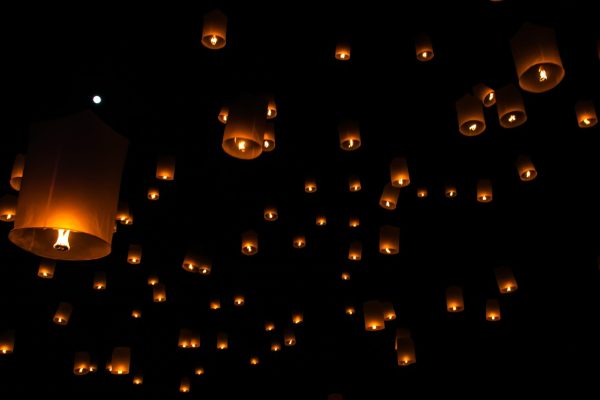Lunar New Year: Introduction
Lunar New Year (Also called Chinese New Year when referring to Chinese communities) is celebrated in countries in Central and Eastern Asia. Unlike the date of the United States’ New Year – which is always January 1st – they celebrate their New Year on February 10th! This is because their new year is based on their lunar calendar, which says that the new year should fall on the second full moon after the winter solstice (December 21st).
Although I am not as familiar with the holiday as others may be, I’m interested in seeing different spins on what I am familiar with. I’ll do my best to cover new things but also to inform others about this version of the famous holiday. The sources I use will be at the bottom of the page. Take a look and venture more into the celebration if you’re interested like I was!
Lunar New Year: Traditions and Celebration
Of course, Lunar New Year is a holiday that everyone anywhere can celebrate! Just like our New Year, it is about setting goals and finding a new version of yourself as the year changes, but with their own special twist!
One of the most well-known traditions is the Chinese/Lunar Zodiac. Every new year has a specific animal based and taken from a Chinese folklore story of the race between 12 animals and on a 12-year cycle. 2024 is the year of the Dragon. Not many people know that the animals also come with an elemental touch to them, as there’s another 5-year cycle for each one, Earth, Fire, Wood, Metal and Water. This year is the Wood Dragon. Wood Dragons are said to be very open with their beliefs, curious, and artistically skilled. The last Wood Dragon year was in 1964, so sadly no students at BHS have that sign. Celebrities such as Keanu Reeves and Kamala Harris have the Wood Dragon sign, so if you do share a sign with them, good for you!
Another well-known tradition is wearing red, but did you know that black and white are NOT to be worn? This is because it is traditionally an indication of mourning/death. Instead, you should wear bright colors to show new and humble beginnings awaiting the new year! People especially wear red because of the association with good fortune and happiness, but also because of the roots of the holiday. The color red allowed evil spirits to be scared off easily, and also protected against them.

Eating well is also a great way to start off your Chinese New Year. This allows you to eat well at the beginning of the year, but also to continue to eat well for the rest of the year forward. Foods such as oranges and mandarins are often given out because of their association with wealth and prosperity due to their color (gold, of course!) There are also longevity noodles, which are very long and represent prosperity and well-wishes. On top of that, there are hot pots, Chinese Dumplings, and so many more recipes and foods that people enjoy on this holiday!
Additionally, there is the famous dragon dance. It’s a tradition that brings good luck and blessing towards the community using the dragon prop. (As seen in Photo 1)

The last tradition I will cover is also one that many people know of. It is the beautiful Lantern Festival. It marks the end of the holiday and is on the first full moon of the lunisolar calendar. It makes for a symbol of peace and forgiveness. There are often cultural performances accompanying the lanterns as well. (Photo 2 shows the festival)
Sources for Exploring More about the Holiday!
https://www.chinahighlights.com/travelguide/chinese-zodiac/dragon.htm
https://www.chinahighlights.com/travelguide/chinese-food/chinese-new-year-food.htm
https://www.usatoday.com/story/graphics/2024/02/07/chinese-new-year-2024-guide/72336965007/
https://education.nationalgeographic.org/resource/lunar-new-year/







